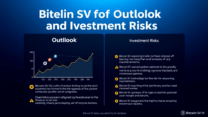
Corporate Investment and Funding Strategies
Types of Corporate Financing

When it comes to growing a business, understanding the different types of corporate financing is essential. Whether you’re a startup founder or managing a well-established company, choosing the right financing strategy can make a big difference in your success. Corporate financing generally falls into two main categories: equity financing and debt financing.
Equity financing involves raising capital by selling shares of your company. This is a great option if you want to avoid taking on debt, but it does mean giving up a portion of ownership. Common sources include venture capital, angel investors, and public stock offerings. Equity financing is often ideal for startups or companies in high-growth phases.
Debt financing, on the other hand, means borrowing money that must be repaid over time, usually with interest. This includes bank loans, bonds, and lines of credit. While you retain full ownership of your company, you’ll need to manage repayment schedules and interest costs. Debt financing is often preferred by businesses with steady cash flow and a clear plan for repayment.
There are also hybrid options like convertible debt, which starts as a loan but can convert into equity under certain conditions. Each financing type has its pros and cons, so it’s important to align your choice with your company’s goals, risk tolerance, and stage of growth.
By understanding these financing types, you can make informed decisions that support your company’s long-term health and growth. Always consider consulting with a financial advisor to tailor the best strategy for your unique situation.
Internal and External Funding Sources

When it comes to growing a business, understanding the different sources of funding is essential. Companies typically rely on two main types of financing: internal and external. Internal funding comes from within the company—think retained earnings, sale of assets, or even reducing operational costs. This type of funding is often preferred because it doesn’t involve taking on debt or giving up equity.
On the other hand, external funding involves raising capital from outside sources. This can include bank loans, issuing shares, venture capital, or government grants. While external funding can provide a quick injection of capital, it often comes with obligations such as interest payments or shared ownership.
Choosing the right mix of internal and external funding depends on your company’s size, goals, and risk tolerance. For example, startups may lean more on external sources like angel investors, while established businesses might prefer reinvesting profits. Understanding these options empowers business leaders to make smarter financial decisions that support sustainable growth.
In short, being strategic about where your funding comes from can make a big difference in your company’s long-term success. Always consider the cost, control, and flexibility of each option before making a decision.
Government Support and Initiatives

When it comes to corporate investment and funding strategies, government support can be a game-changer. Many governments around the world actively encourage business growth and innovation through a variety of initiatives. These can include grants, tax incentives, low-interest loans, and public-private partnerships. For startups and small to medium-sized enterprises (SMEs), these programs can provide the crucial financial boost needed to scale operations or invest in research and development.
For example, in the United States, the Small Business Innovation Research (SBIR) program offers funding to small businesses engaging in federal research and development with commercial potential. Similarly, the European Union provides Horizon Europe funding to support innovation and technological advancement. In Asia, countries like South Korea and Singapore offer generous tax credits and government-backed venture capital to stimulate entrepreneurship.
Taking advantage of these programs not only reduces financial risk but also adds credibility to a business, making it more attractive to private investors. It’s important for business owners and financial planners to stay informed about available government initiatives in their region and industry. A proactive approach to exploring these opportunities can significantly enhance a company’s funding strategy and long-term sustainability.
Key Considerations: Debt vs. Equity

When it comes to corporate investment and funding strategies, one of the most important decisions a business must make is whether to raise capital through debt or equity. Each option has its own set of advantages and trade-offs, and understanding these can help you make smarter financial decisions for your company.
Debt financing involves borrowing money that must be repaid over time, typically with interest. This can come in the form of loans, bonds, or lines of credit. The main benefit of debt is that you retain full ownership of your business. However, it also means taking on financial risk, as regular repayments are required regardless of your company’s performance.
Equity financing, on the other hand, involves selling a portion of your business in exchange for capital. This could mean bringing in investors or issuing shares. The upside is that there’s no obligation to repay the funds, which can ease cash flow pressure. The downside? You’ll be sharing future profits and potentially giving up some control over business decisions.
Here are a few key considerations to help you choose:
1. Control: Do you want to maintain full control, or are you open to sharing decision-making with investors?
2. Risk Tolerance: Can your business handle regular debt repayments, or would you prefer the flexibility of equity?
3. Growth Stage: Startups often lean toward equity to fuel growth, while mature companies may prefer debt for its tax advantages.
4. Cost of Capital: Compare interest rates with the expected return investors will demand.
Ultimately, the right choice depends on your business goals, financial health, and long-term vision. Many companies even use a mix of both to balance risk and reward. Taking the time to weigh your options carefully can set your business up for sustainable success.
If you’re unsure, consulting with a financial advisor can provide personalized guidance tailored to your specific situation.








답글 남기기